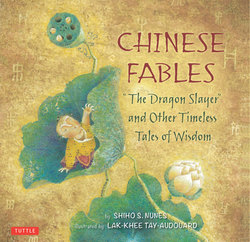Читать книгу Chinese Fables - Lak-Khee Tay-Audouard - Страница 7
ОглавлениеPreface
Who doesn’t remember “The Tortoise and the Hare” or “The Lion and the Mouse” or “Belling the Cat,” and recall the lessons these simple stories teach? Fables are among the stories we hear first and remember longest.
If you went to Sunday school, you will have heard the “Parable of the Server” and the “Parable of the Talents.” A parable, like the fable, conveys some truth or moral lesson, but it does so indirectly by using a comparison of some kind. The New Testament of the Bible teaches many lessons through the use of such comparisons.
Wherever they came from, whatever their source—Greek, Hindu, European, Asian—these tales, with their moral teachings and ageless wisdom, are an important part of our literary heritage.
In China, cautionary tales, like fables and parables, have a long and illustrious history. They are part of a class of works called yu-yen, writings with an underlying—a second—meaning. Yu-yen also include allegories, metaphors and anecdotes. These works are very old. China’s golden age of fable was in the fourth and third centuries BCE, but some yu-yen go back even further. The more recent ones were written between 1644 and 1911. These writings were not accessible, however, until Chinese and European scholars and folklorists collected, translated and published them in modern form.
From three such collections Wolfram Eberhard, an American folklorist, abstracted and cataloged five hundred tales in his Chinese Fables and Parables, a monograph on Asian folklore and social life. The cataloged entries are brief, giving only the story line in two or three sentences, rarely more. An unmistakable thread of humor runs through many of them. Devoid of detail, the entries cry for invention.
And invent I did with the nineteen entries I selected to expand into stories. I have taken liberties, I’m sure, but tried to remain true to each story’s original intent as nearly as I could interpret it. As fables and parables the world over have always done, these Chinese tales illustrate both the wisdom and foolishness of ordinary folk.
